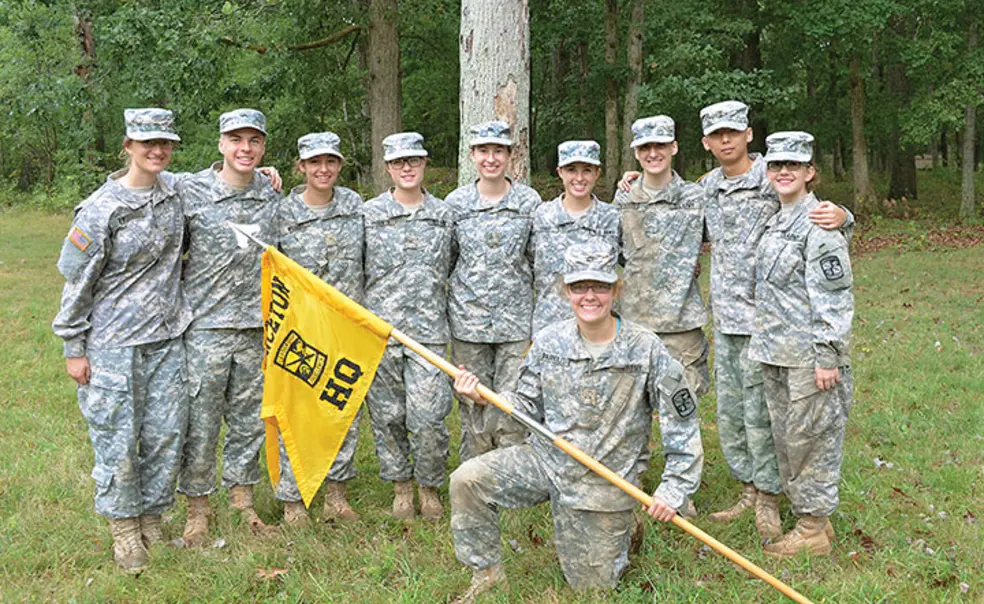Army, Navy Report Increases: More Freshmen Join ROTC Units
It’s been a good year for ROTC recruiting at Princeton. Navy ROTC has enrolled seven new midshipmen, the highest number since the program returned to Princeton in 2014, while Army ROTC, which attracts six or seven freshmen in a typical year, drew 10 this year.
Lt. Col. Kevin McKiernan, commanding officer of the Army ROTC unit, said the increase in freshman enrollment in part reflects staff efforts to reach out to high school seniors as they apply to the University.
Seven of the 10 freshman Army cadets are women, which McKiernan said demonstrates the value Princeton and the Army place on diversity. The large percentage of women gives the class “an interesting dynamic,” said cadet Kasey Bersh ’20, who added that the ROTC program lets her balance her desire to become a soldier with Princeton’s academics.
The Navy ROTC program, absent from campus from 1971 to 2014, is in its third year after reinstatement as a joint program based at Rutgers University. The commanding officer, Capt. David Wright, said the growth in enrollment is a sign of greater awareness of the program at Princeton.
A continuing question for both programs is the issue of academic credit. ROTC and NROTC students take one course each semester as part of the program, and they do not receive Princeton credit for these courses. There is one exception: McKiernan co-teaches a politics course with Professor Jacob Shapiro, “The Military Instrument of Foreign Policy,” which covers part of the Army ROTC curriculum and does count for academic credit. Wright said he is working to gain academic credit for courses offered to Navy recruits.
The Air Force ROTC program, which is also a joint program with Rutgers, has one sophomore and no freshman members this year.












No responses yet